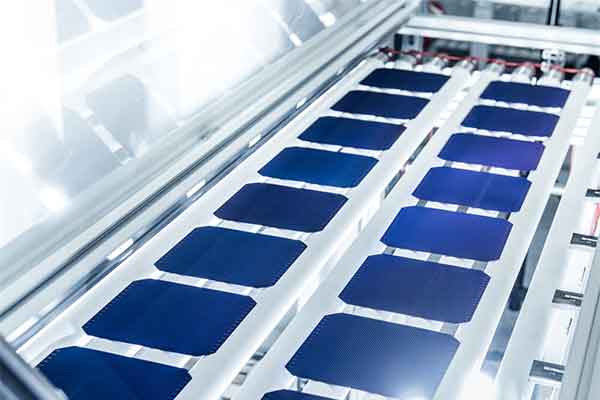ROCHESTER, N.Y. | NATCORE —
Scientists working in the Rochester R&D Center of Natcore Technology Inc. (TSX-V: NXT; NTCXF.PK) have developed a new solar cell structure that will simplify the production process, significantly lower costs, and speed the path toward ultra high-efficiency cells.
Importantly, the new cell structure has the potential to completely eliminate high-cost silver from mass-manufactured silicon solar cells – an achievement that has been a long-time goal of solar science.
Natcore’s new cell is an advancement of the silicon heterojunction (SHJ) cell structure that other researchers have used to achieve world-record silicon solar cell efficiencies.
Natcore’s adaptation offers key advantages over previous SHJ cells:
– The new cell structure – which can be achieved only through Natcore’s proprietary laser processing technology – may allow for the complete elimination of silver from the finished silicon solar cell.
– With silver contributing approximately 30% to the cost of a silicon solar cell, this achievement alone would slash production costs.
– Natcore’s laser processing techniques allow for further simplification of the production process, projecting to a cost-per-watt far lower than any solar cells available today.
– Natcore’s early first-generation research cells using this new structure are already producing efficiencies near today’s common commercial cells. With better materials and further refinements that are in progress, the new cells show a clear technical path to efficiencies substantially greater than current commercial cells.
– The new cell structure opens the door to further cost savings and production simplification through a novel packaging approach that Natcore is also pursuing as part of its development program.
Natcore’s advisors have recommended minimum efficiency and other technical benchmarks before the company approaches industry for licensing of its technology. The first generation cells using this revolutionary new structure have surpassed all of these benchmarks, and Natcore will now begin soliciting license agreements.
Parallel to its commercialization efforts, Natcore will continue to refine and improve its SHJ cells at its lab facilities in the Eastman Business Park, and will also leverage its relationships with leading independent laboratories to improve its technology.
In addition, Natcore’s scientists are currently working toward a second generation of its new structure that will employ no silver at all and thereby validate this very important advantage.
Natcore’s new cell is an all-back-contact heterojunction structure using thin amorphous silicon layers in combination with a standard crystalline silicon solar wafer. The cell could utilize a novel packaging approach in which a flex circuit is directly bonded to multiple, small contact pads by high-speed laser fusion.
This integrated approach has two major advantages. First, it eliminates front surface contacts, which are costly and block some incoming light. Secondly, the cell-to-module packaging can be accomplished with low-cost, alignment-tolerant bonding.
“While we’re completing our patent submission, we’re hesitant to give more details about the new structure,” said Dr. David Levy, Natcore’s Director of Research and Technology. “All of our tests to date demonstrate that we’re on the optimum path toward very high efficiencies with manufacturing solutions that are low cost and do not require complex process equipment.”
“Practical photovoltaic solar cells have been around for 60 years,” says Dr. Charlie Gay, former Director of the National Renewable Energy Lab (NREL) and a member of Natcore’s Science Advisory Board. “But Natcore scientists have taken a lot of known pieces and assembled them in new and different ways. They’ve taken basic concepts and made them manufacturable by using low-cost materials and simplifying production methods.”
About Natcore Technology
Natcore Technology is focused on using its proprietary nanotechnology discoveries to enable a variety of compelling applications in the solar industry. Specifically, the company is advancing applications in laser processing, black silicon and quantum-dot solar cells to significantly lower the costs and improve the power output of solar cells.














Comments